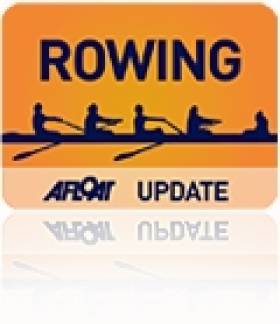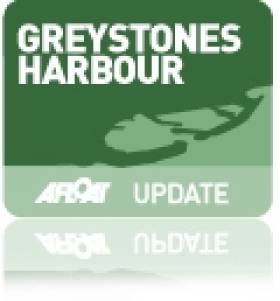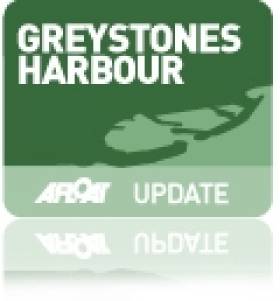Displaying items by tag: Mitchell
Mitchell Fastest at Cork Sculling Ladder Time Trial
#CorkScullingLadder: John Mitchell of Lee Rowing Club was the fastest man at the Cork Sculling Ladder time trial at the Marina today. Dan Buckley of Lee and Eamon Joyce of Cork Boat Club were locked on the same time in a tie for second, just two seconds behind Mitchell. One place further back, three men tied for fourth: Dan Begley of Shandon, David Synnott of Lee and Colm Hennessey of Shandon. Marie O’Neill of Cork BC, who won last year, was also the fastest woman this time.
Cork Sculling Ladder TT, Marina, Cork (Selected Results) Men: 1 J Mitchell (Lee RC) 7:08, 2= D Buckley (Lee), E Joyce (Cork BC) 7:10; 4= D Begley (Shandon), D Synnott (Lee), C Hennessey (Shandon) 7:20. Women: M O’Neill (Cork BC) 7:53.
Interim Harbour Opens at Greystones
#MARINA– Greystones Harbour developer is considering whether there is enough demand to open the planned Greystones marina next Summer following the opening of the interim harbour to the public last Saturday (November 5th).
Initial marina plans focussed on the installation of a 200-berth facility but subsequent market research cast doubt on whether the marina could be filled in the downturn. The research also showed that 80% of the berths required would be less than eight metres.
The new interim harbour consists of two public slipways, also beach launching facilities, boat compounds for the Sea Scouts, Rowers, Divers, Sailors and Anglers. The South Harbour Wall and the beach are now available for walking, opening it up for all to use according to Cllr. Derek Mitchell.
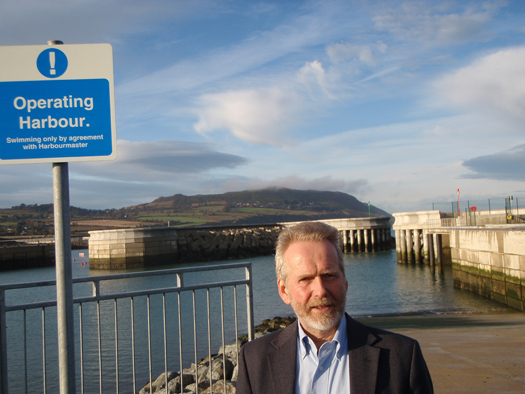
Councillor Derek Mitchell at one of the new slipways now open at Greystones harbour
‘The boat launching facilities are the best in the country and will provide adults and the youth with great sporting opportunities’. The photo shows Cllr Mitchell standing at the top of the new slipway, Mitchell said.
Nama have said they hope to make a decision soon as to whether to fund stage 2 consisting of the Primary Care Centre, five clubhouses and a much better quality finish for the Public Square than at present. The Coastguard and the Council are considering going to tender to construct the Coastguard station. ‘I hope these proceed soon so we can finish the job’ the Councillor added.
All Afloat's Greystones Harbour News here
The 'best public boat launching facilities in Ireland' will be provided in a final Greystones Harbour Plan released today, according to Fine Gael Concillor Derek Mitchell.
Having consulted with the community Sispar has produced their final plan for the Harbour for September and are currently implementing it, the Councillor says.
'This provides the best public boat launching facilities in Ireland even in this temporary solution. There is also good walking access to the area and South Pier together with car parking and green areas. To construct the Health Centre safely the hoardings at the North end will remain but the large green area there should open in a year, Mitchell, a winner in the Ruffian class in last week's VDLR sailing regatta, told Afloat.ie

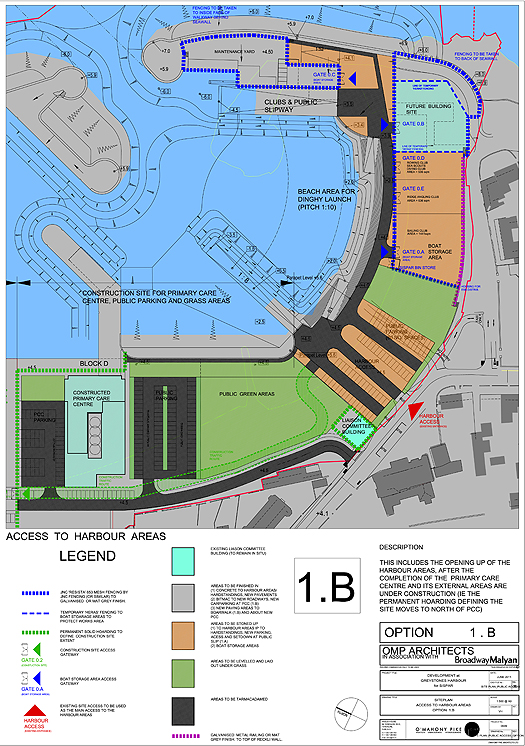
Drawings showing the proposed public access arrangements at Greystones Harbour. For higher resolution versions the pdf's are attached below.
'I am pleased they are implementing most of my plan and opposed to more meetings which will only delay implementation', he added.
1999 Mitchell Cabin cruiser on the Market for Euro 4,000
A 1999 Mitchell has just been added to Afloat's Boats for Sale site. This is an ideal river cruiser, with a small cabin, decent sized wheelhouse and good cockpit space. The blue hulled boat is fitted out with an inboard diesel engine, on a shaft drive, she is extremely economical to run, according to broker O'Sullivan's Marine of Tralee. On a trailer and ready to go the boat is priced to sell at Euro 4,0000. Check out photos and a full spec HERE.


























